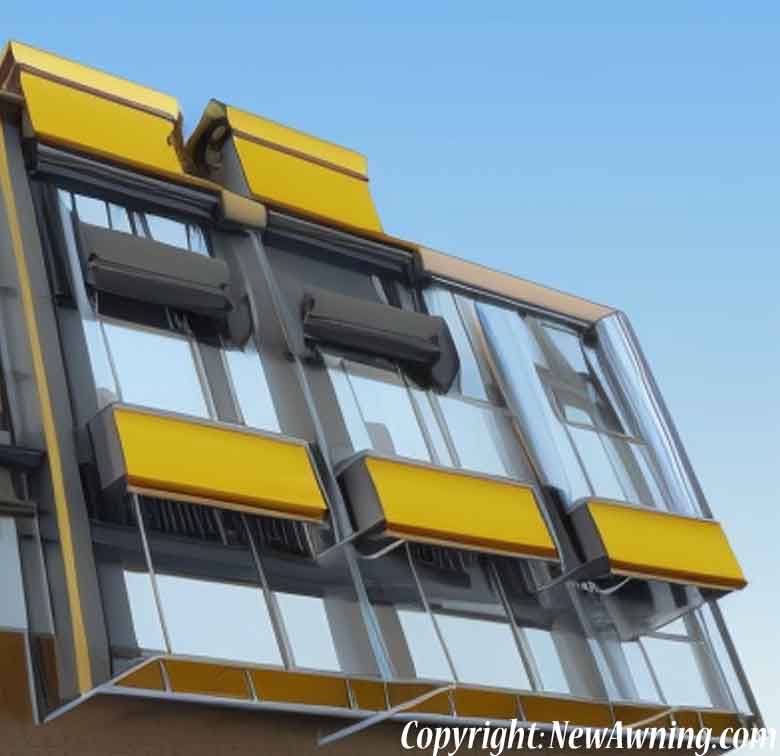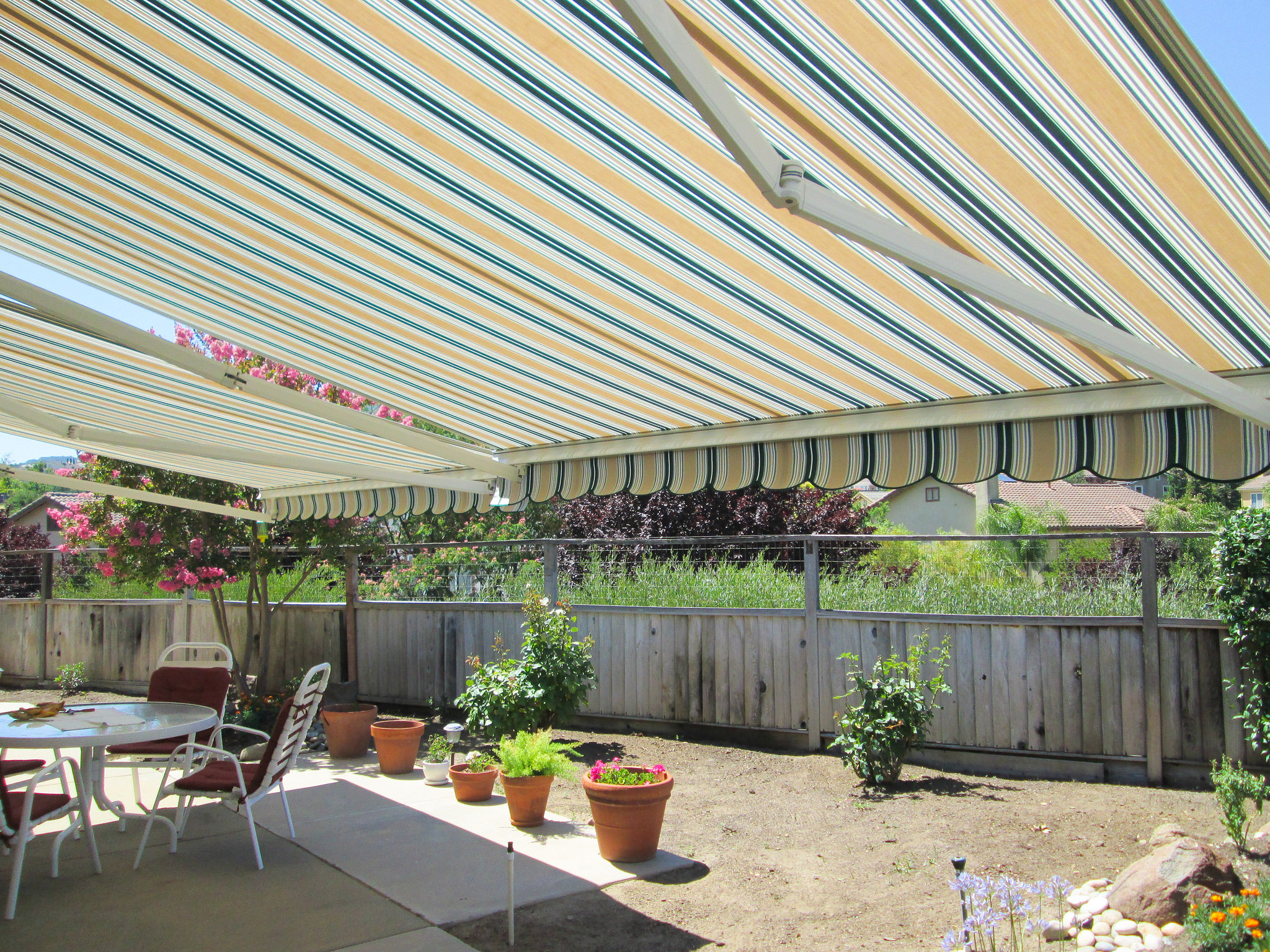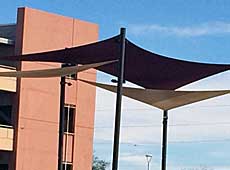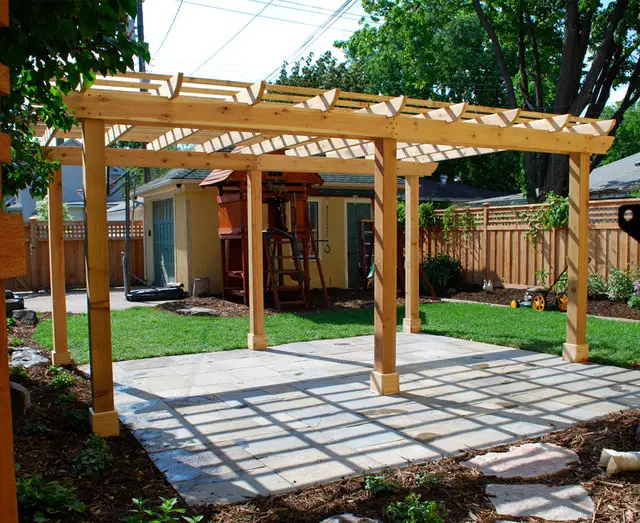Once you have made the decision to add an awning or canopy to your home, the first two questions are “What Color Awning?” and “What Style?”. In this post, we will offer an exhaustive guide to the best colors for awnings.
- Lower air conditioner costs
- Prevent furniture and carpet fading
- Block up to 94% of UV rays
- Create usable outdoor living space
- Increase the home’s value
- Improve curb appeal
Choosing the perfect shade
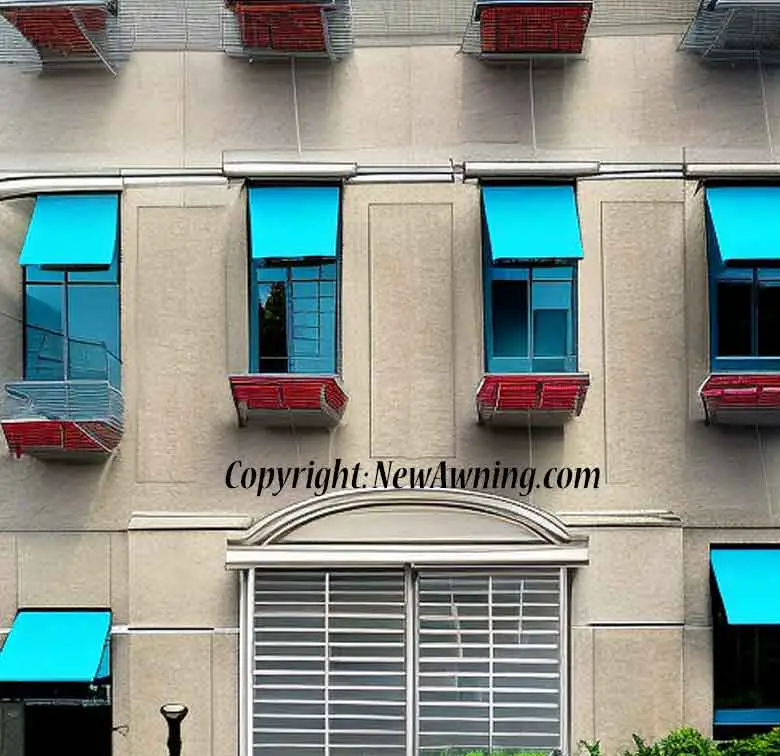
Whether the fabric has a pattern or is a solid color, all awnings will be primarily one color, and as the owner, you need to decide whether you want that to be a light or dark color. The key difference is often determined by the reason for the addition to the home. If the central goal is to lower the carbon footprint or to maximize the energy benefits, then you will 100% want to go with a lighter color option. Because the light and heat are reflected at a higher rate, they provide significantly more cooling than the darker alternatives. Some studies have shown that the lighter are more than double the cooling effect over a black material.
One question we hear frequently on this topic is from people who want to maximize their cooling bill, but really don’t want to go with an all white awning. We completely understand this as the solid white is both a challenge to keep looking fresh, and it can clash with many exteriors. Our next section will dive deep into the science, but if you’d prefer to stay high level then you will receive much of the benefits by choosing a pastel.
Science of light reflection, absorption, and transmission
This portion of the post is designed for those who want to understand the why behind the what. If you are not interested in the physics, then you can simply skip to the next section without missing of our recommendations.
Solar light is composed of all hues far beyond the spectrum that can be seen by the naked eye. At the low end, there is infrared. Above infared, we get into the visible range which includes the ROYGBIV colors, and then we move to the ultraviolet range which is also invisible to humans. All light energy is composed of the same atoms, and the hue is determined by the rate at which it vibrates.
When solar light encounters any substance, one of three things will occur. The first is when it simply passes through the material without changing form. This is called “Transmission”. You can picture this by shining a flashlight through a piece of plastic wrap. The light will appear exactly the same on the other side as the clear wrap will transmit most of the energy. Note that even the nearly transparent material does still block some of the energy, and this can be observed by repeated folding onto itself to make many layers. After 32 layers, there will obvious difference as a great portion of the energy will now be blocked.
The second property a material can exhibit is to absorb the energy. This occurs because all molecules vibrate at a certain frequency. When the energy hits something that is a complimentary frequency, then the light can pass through the material. The light passing through the material creates
radiant heat. A completely black material is a compliment of white meaning that it will absorb all light and create the most radiant heat.
The third property a material can exhibit is to reflect the light energy. This occurs when the molecules of an object are vibrating at a frequency. When the solar light encounters molecules in the object at the same hertz they are repelled which reflects the light and most of the energy. This reflected light how humans observe the color.
How do we apply this? If you are going to choose the darker shades then you may want to go with an open style awning with the sides open so the wind and air will flow better to cool the awning. Additionally, you may want a darker color awning slightly higher than a light or pastel awning so the radiant heat has a chance to dissipate before reaching the patio. Another item to consider is installing a solar shade on the windows underneath a dark color awning as a way to still reflect the heat and keep it out of the house.
Thanks for sticking with us after that long scientific explanation. A lot of our visitors are DIY people who really care about the behind the scenes, and I had received so many questions around why the more pale colors were more cost efficient for cooling.
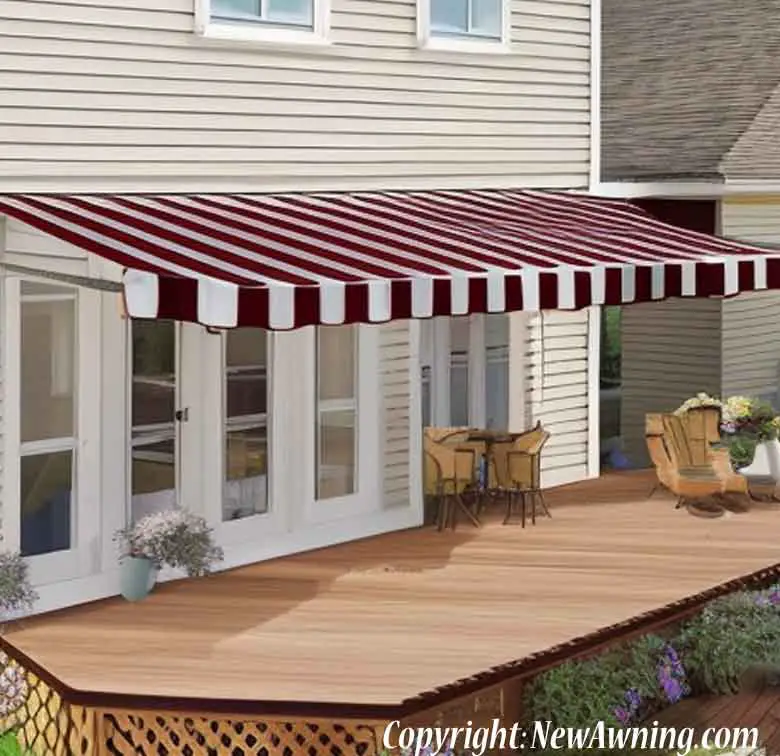
There are two schools of thought when adding an awning and that is whether to do with a complimentary color or something that is on the opposite side of the color wheel. The latter will lead the eye to that making it a natural visual focal point. If your goal is to create the nice entertaining outside area then we really like the “Splash of Color”. Even if you are going for a less visible feel, we still recommend choosing a color different than your exact home color. We’ve spoken with many buyers who tried to match their house exactly with a custom color only to be disappointed after a few years when the materials wear differently. One of our top tips is to always use a color that is different than your house shade. We’ve built the table with our recommendations of home color with awnings colors that will match. If you’re unsure, many manufacturers will send you free samples so that you can hold the fabric and see how it pairs with your exact house.
When looking at the most popular awning colors it’s important to remember that it needs to fit with the decor of your home. If your home has white or light siding, you are far better to go with a darker color for contrast. An aqua and sunshine yellow awning may be trending and look great on pinterest, but it would just look washed out against the white backdrop. Similarly, if you have a dark gray home, then you’ll want to stick with a brighter or vibrant awning color. This can be accomplished with a light pick or just choosing a hue with high saturation.
Red – This is a great choice for homes that are painted white or pastel yellow siding. All hues of red can be used from the bright ruby red to the deep crimson will create a nice contrast against the siding. Red should always be avoided for the blue stucco homes that are popular in the Southwester states and any home that has green external amenities.
Yellow – This is a lesser selected color that we’ve seen primarily used for patios. It creates an open sunny feel and is perfect around a pool area. This creates a nice contrast for homes with brick exteriors or the dark gray stucco.
Green – Forest Green is one of the more popular choices in the United States. These work especially well with yellow siding homes. They can also work well with the brown and beige stucco homes. We recommend avoiding brick homes and or the light blue stucco homes.
Blue – This is a safe choice that works on the majority of homes. It looks best in a white home, but there are not exteriors that clash horribly.
Brown – This is a great choice for gray or beige homes. The brown can create a nice contrast to the other neutral colors without committing too far to a single color scheme. These can also create a sense of high-end elegance.
White – Overall, we are not fans of white awnings for the home. They can work with brick homes or dark gray stucco homes, and we recommend always avoiding them if you have a white or yellow home.
Black – This color will work with absolutely everything. While it provides the least benefit to cooling, it can instantly frame an area and make the area stand out with a few matching furniture pieces.
There are many patterns available, and we are going to recommend that as a homeowner you ignore most of them. To maximize the resale value of your home you should only consider awnings that are either one solid color or a simple stripe pattern. While we are not fans of the solid white awning, having a red/white stripe pattern is a great way of getting the style elements of the color while some of the energy benefits of white.
Our primary preference if you are getting a stripe pattern is for it to be composed of alternating white and a single color. We have seen some beautiful fabrics that combine multiple colors; however, only consider this if you are using it with a white home.
Another consideration with patterns is the width of the strip. We recommend narrow stripes if you are getting awnings for a window or other small area. This ensures that there will be enough stripes for the pattern to be completely visible and understandable at a distance. If you are covering a larger area such as a porch or patio, we suggest a wide stripe. When you are covering big spaces, the narrow patterns feel busy.
One of the great benefits of fabric awnings is that they can easily be repainted. A fresh coat of paint can make your worn shade look bright, fresh and new again at a fraction of the cost. Best of all, it doesn’t need to be taken down and reinstalled to be painted. Because the type of paint will vary based on the type of fabric that you have, we created a
full guide on how and what color should you paint awnings.
We have created a
Pinterest page with some of our favorite awnings if you are looking for inspiration for your next project. We also have an entire gallery if you’re looking for
pictures of awnings on houses.
Last Updated:August 15, 2025
